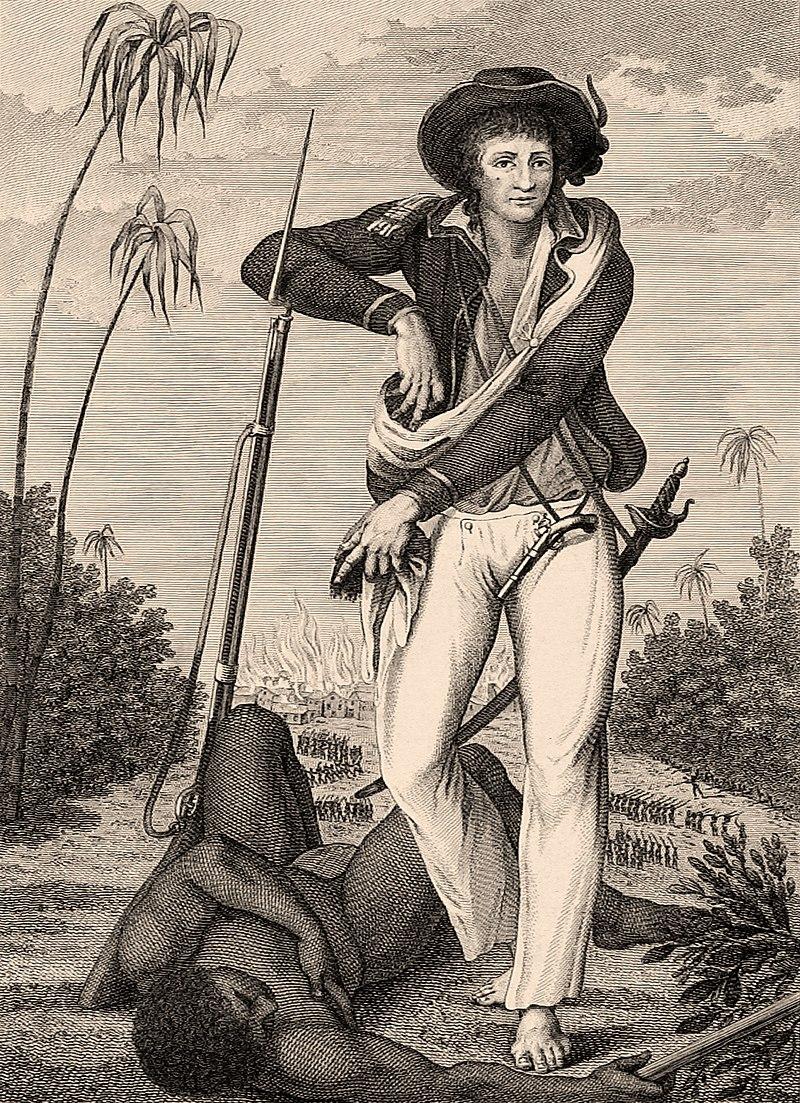The non-cropped engraving says below:
“From different Parents, different Climes we came,
At different Periods”; Fate still rules the same.
Unhappy Youth while bleeding on the ground;
’Twas Yours to fall—but Mine to feel the wound.
London, Published Decr. 1st. 1794, by J. Johnson, St. Pauls’ Church Yard.
* The engraving is of John Gabriel Stedman leaning on his gun with a dead black person seeming to be a slave shot and bleeding. Presumed a dead revolter. This is located in the inside cover, one of the first engravings for the book.
About John Gabriel Stedman(1744-1797)The military officer and Author of a Narrative, of a 5 years' expedition Against the Negroes of Surinam. While working to aid troops against ending the slave revolt his diary will be later used as a first-hand account for the abolitionist movement. Comparisons of the original diary entries versus the Narrative adaptations show a possible sanitization and more romanizing of his time. His military history is long and starts at age 16. In fact, in chapter one he writes an explanation of his military history. Stedman left the Dutch republic sometime in December of 1772 responding to a call for soldiers to serve in the West Indies. His detailed writing led to a long group of subscribers from many places in Europe. During the narrative, Stedman on numerous occasions uses stereotypes of the racial groups of Surinam and defends the institution of slavery. While writing Stedman colors himself as an incurable romantic as he swoons over the natural beauty of the new world in comparison to the harsh treatment of slaves. He also writes often of his sexual exploits of slave women in Surinam. Stedman also writes in the journal entry of 11 April 1773 about a slave woman named Joanna who is purchased for sex and domestic service. He writes often of her beauty and constant devotion to her through a romantic lens.
British Library. (n.d.). John Stedman's Narrative of a five years expedition against the revolted Negroes of Surinam, with engravings by William Blake. British Library. Retrieved December 7, 2022, from https://www.bl.uk/collection-items/john-stedmans-narrative-of-a-five-ye…
(1744–1797), J. G. S. (2022, November 29). Narrative, of a five years' expedition against the revolted negroes of surinam, in Guiana on the Wild Coast of South America; from the year 1772 to 1777... volume 1 (of 2). External link. Retrieved December 7, 2022, from https://www.gutenberg.org/cache/epub/65715/pg65715-images.html#ch6


